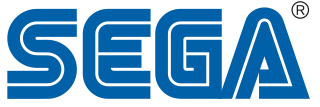SEGA: A Deep Dive into a Gaming Legend
SEGA (originally Service Games) is a Japanese multinational video game developer and publisher, and a former hardware manufacturer. It has a long and fascinating history, marked by innovation, fierce competition, and a dedicated fanbase. Here’s a breakdown, covering its history, key consoles, iconic games, current status, and more:
1. Early History (1940s – 1980s): From Pinball to Arcades
- Founded: 1942 in Honolulu, Hawaii, as Standard Games, initially servicing coin-operated entertainment machines. It later moved to Tokyo, Japan.
- Early Focus: Pinball machines were SEGA’s bread and butter for decades. They were one of the first to import American pinball machines to Japan after WWII.
- Transition to Video Games: In the late 1960s, SEGA began developing its own electro-mechanical games and then moved into early arcade video games.
- Arcade Success: The 1980s saw SEGA become a major force in the arcade scene with hits like:
- Space Harrier (1985): A groundbreaking 3D rail shooter.
- Out Run (1986): Known for its vibrant graphics, catchy music, and sense of speed.
- Hang-On (1985): A motorcycle racing simulator with a unique arcade cabinet.
- Fantasy Zone (1986): A colorful and innovative side-scrolling shooter.
2. The Console Wars (1988 – 1999): Challenging Nintendo & Sony
This is where SEGA really became a household name, and where the drama really began.
- Master System (1986/1988): SEGA’s first major home console. It was a strong competitor to the NES (Nintendo Entertainment System) in Europe and Brazil, but struggled in North America. Featured games like Alex Kidd in Miracle World and Phantasy Star.
- Genesis/Mega Drive (1988/1989): This 16-bit console was SEGA’s breakthrough. It directly challenged Nintendo‘s SNES and sparked the infamous “Console Wars.” Key features:
- “Blast Processing”: A marketing term emphasizing the Genesis’s faster processor.
- Aggressive Marketing: SEGA positioned itself as the “cool” alternative to Nintendo.
- Iconic Games:
- Sonic the Hedgehog (1991): SEGA’s mascot and a direct competitor to Mario. Known for its speed and attitude.
- Streets of Rage (1991): A groundbreaking beat ’em up series.
- Golden Axe (1989): A classic fantasy beat ’em up.
- Ecco the Dolphin (1992): A unique and atmospheric adventure game.
- SEGA CD (1992): An add-on for the Genesis, offering CD-ROM capabilities. While innovative, it was expensive and didn’t gain widespread adoption.
- SEGA 32X (1994): Another add-on for the Genesis, attempting to bridge the gap to 32-bit gaming. It was a commercial failure and further damaged SEGA’s reputation.
- Saturn (1994/1995): SEGA’s first 32-bit console. It was powerful but had a complex architecture, making it difficult for developers. It also launched early, before Sony’s PlayStation was ready, but suffered from poor marketing and distribution. Notable games:
- Virtua Fighter (1993/1995): A pioneering 3D fighting game.
- Panzer Dragoon (1995): A visually stunning rail shooter.
- Guardian Heroes (1996): A unique beat ’em up with RPG elements.
- Dreamcast (1998/1999): SEGA’s final console. It was technologically advanced, featuring online gaming capabilities (through the built-in modem), and had a strong launch lineup. However, it was ultimately unsuccessful due to:
- Competition from the PlayStation 2: Sony’s PS2 was a juggernaut.
- Piracy Concerns: The Dreamcast was relatively easy to pirate.
- SEGA’s Financial Troubles: Years of console failures had taken their toll.
3. Transition to Third-Party Developer (2001 – Present)
- Console Discontinuation (2001): SEGA officially exited the console hardware business.
- Focus on Software: SEGA shifted its focus to developing and publishing games for other platforms (PlayStation, Xbox, Nintendo, PC, mobile).
- Key Franchises Continued:
- Sonic the Hedgehog: Remains a flagship franchise, with numerous games released across various platforms.
- Yakuza/Like a Dragon: A critically acclaimed and popular action-adventure series.
- Total War: A successful strategy game series developed by Creative Assembly (owned by SEGA).
- Persona: A highly regarded JRPG series (owned by Atlus, a SEGA subsidiary).
- Football Manager: A hugely popular football management simulation series.
- Acquisitions: SEGA has acquired several studios over the years, including:
- Atlus (2013): Known for Persona and Shin Megami Tensei.
- Creative Assembly (2007): Developers of the Total War series.
- Relic Entertainment (2004): Developers of Company of Heroes and Warhammer 40,000: Dawn of War.
- Current Status (2023/2024): SEGA is a thriving third-party developer and publisher. They continue to release new games in their established franchises and explore new IPs. They’ve seen a resurgence in popularity with titles like Sonic Frontiers, Like a Dragon: Infinite Wealth, and continued support for Persona. There’s been renewed interest in revisiting older SEGA IPs, with remakes and remasters being released.
Key Takeaways & Legacy
- Innovation: SEGA was a pioneer in arcade gaming and home console technology.
- Competition: The “Console Wars” with Nintendo were legendary and pushed both companies to innovate.
- Iconic Characters: Sonic the Hedgehog is one of the most recognizable video game characters of all time.
- Resilience: Despite its console failures, SEGA has successfully reinvented itself as a leading software developer and publisher.
- Dedicated Fanbase: SEGA has a loyal and passionate fanbase that continues to support its games.
Where to find more information
- Official SEGA Website: https://www.sega.com/
- Wikipedia: https://en.wikipedia.org/wiki/Sega
This is a broad overview, and there’s much more to the story of SEGA. Do you have any specific aspects you’d like me to elaborate on? For example, are you interested in:
- A particular console?
- A specific game?
- SEGA’s arcade history?
- Their current development projects?
- The reasons behind the Dreamcast’s failure?
